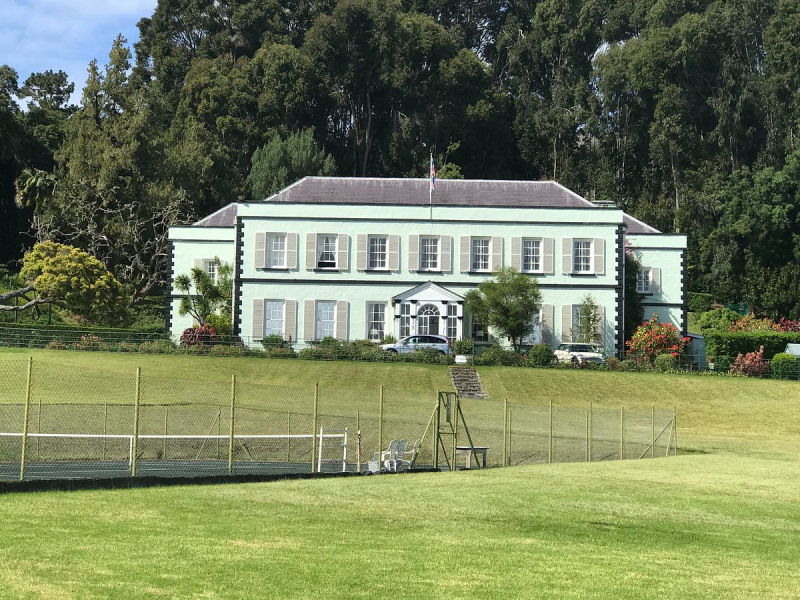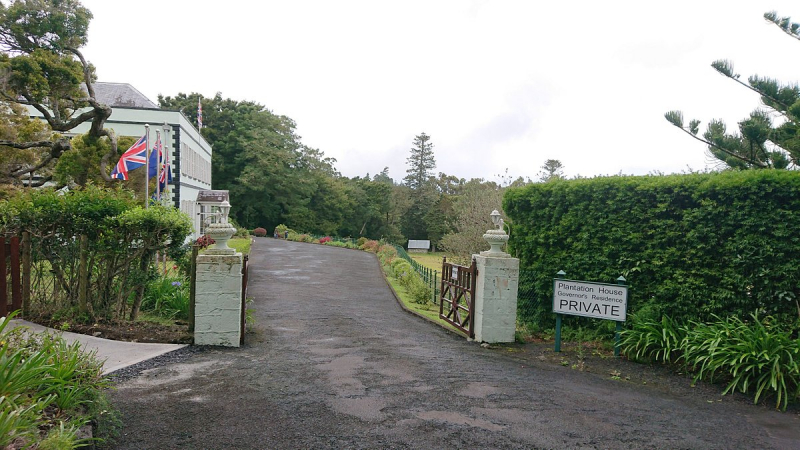Plantation House
Plantation House is situated at the top of Young's Valley on a large slope facing northwest. The main center block of the Plantation House is two floors tall, with seven bays and a central patio. Slats, balustrades, and balustrades adorn the facades, which are all assembled and closed. Various modifications have been made to the rear launch wings. The house's interior has well-kept rooms with pressed zinc ceilings.
There are 35 rooms in the home (although previous writers claimed there were 62!). There are 24 living rooms and 11 storage rooms, among other things. As it has always been the Governor's job to entertain a large number of guests, the dining room is a massive 6.4mx10m space. Governor Lowe built the library in 1816, and it now houses over 2,000 titles. Surprisingly, most of the guest rooms have names engraved on a bronze plate on the door. 'Governor's Room,' 'Admiral Room,' 'General's Room,' and 'Baron's Room,' among others, but also 'Blue Room,' 'Pink Room,' and others. After an 1838 visit by Prince William Henry Frederick of the Netherlands, there was allegedly a 'Prince of the Orange Room,' but no one remembers which room it was. These places have sparked a lot of debate. Governor Grey-Wilson had them nailed to the door.
Governor Lowe regularly dines for at least 60 people, while the dining room currently seats 25 people. The room's chandelier came from Longwood House and was moved to Plantation House after Napoleon's death. All of St Helena's first governors resided and worked at the Castle. The area known as 'The Plantation' was nothing more than a farm, or 'plantation,' to feed the slaves and provide the Governor's table. In the 1670s, the road to The Plantation was the first to be completed outside of Jamestown. Governor Anthony Beale owned the first Government House on the site, which was transferred to the East India Company in 1679. For several years, council meetings were held at this location.
By 1711, Governor John Roberts had ordered the construction of a more suitable edifice, but it was allowed to fall into disrepair by his successor, Governor Benjamin Boucher, who was given permission to depart the island when he left and claimed to have brought everything that could be moved. Locks and keys are among the services he receives. The structure was reported to be in need of repair in 1717, with the roof possibly collapsing. The East India Company erected Plantation House as we know it today in 1791-2 as a country or summer residence for the Governor (the castle later became the residence of the 'town'), and Governors have continued to utilize the property since then. Governor Alexander Beatson (1808-1813) made considerable additions to the garden, and his successor, Governor Mark Wilks, constructed and greatly expanded the house in 1814. The expansion to the house was erected by Governor Hudson Lowe (Napoléon's famous grandfather), and presently includes the Library, Billiards Room, Kindergarten, Kitchen, Office, Coaching House, and Stables. The Governor's trip to the Castle today takes only a few minutes in the official automobile, but it used to take a little longer and was more extravagant.
A white building stands tall in the middle of a green hill, what is more, beautiful when the colors in the picture blend together to create the most perfect, most beautiful picture. Not only that, but Plantation House also has a long history through the tempered of historical events, which is historical beauty. This makes Plantation House worthy of being on the list of the most beautiful historical sites in Saint Helena, Ascension and Tristan da Cunha.
Location: STHL 1ZZ, St Helena, Ascension, and Tristan da Cunha







